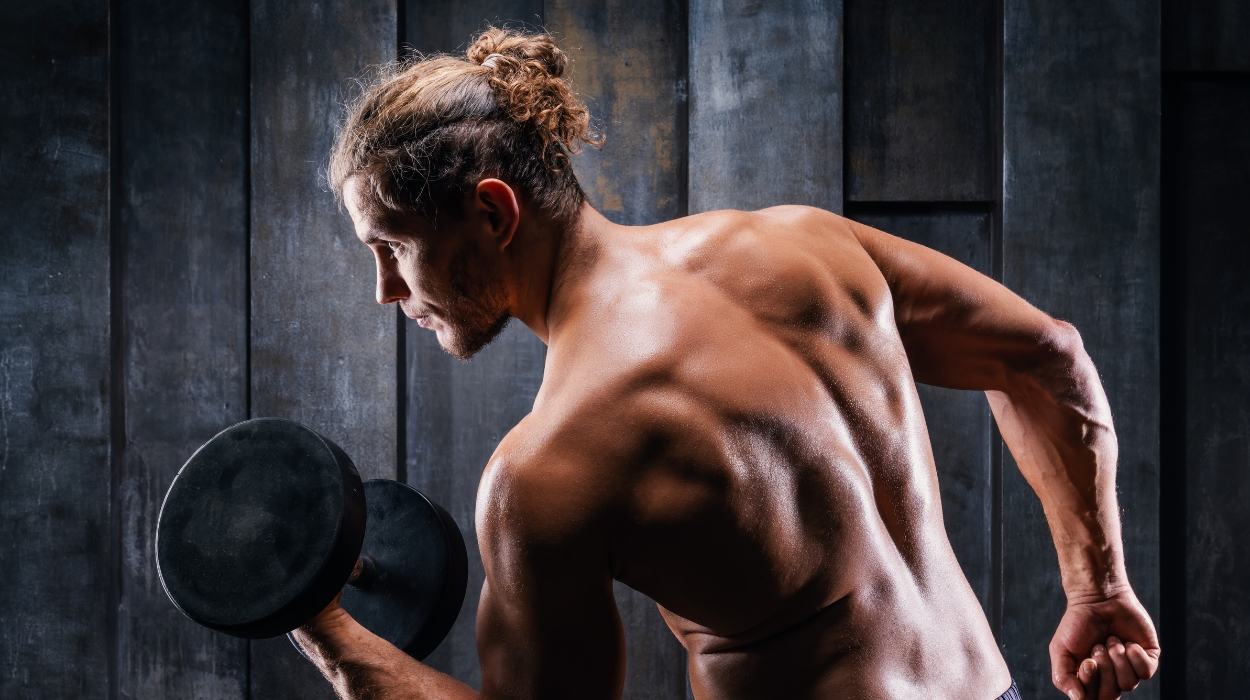Do you yearn to boost your arm strength while pursuing a wholesome lifestyle? Building larger, well-toned arms can enhance your self-assurance and promote overall wellness.
Setting out on a path to more robust and defined arms, our six top arm exercises strive to facilitate your individual growth and help you attain the perfect biceps and triceps. These carefully selected exercises accommodate a range of fitness levels, ensuring a comprehensive approach to muscle improvement and overall well-being.
We understand that everyone’s fitness journey is unique, which is why our suggestions on how to get bigger arms can be adjusted to fit your specific requirements and objectives. Whether you’re a seasoned gym-goer or a novice seeking a solid foundation in fitness, these exercises will steer you toward your targets.
Discover how to get bigger arms fast and how to get bigger arms at home with our tips and tricks.
Best Exercise To Get Bigger Arms
- Biceps Exercises: Dumbbell Curl Alternation, Curls With Neutral Grip, Isolated Bicep Curls
- Triceps Exercises: Narrow-Grip Chest Press, Dips for Triceps, Tricep Extension Overhead
- Forearms Exercises: Curls for Wrists, Wrist Curls in Reverse, Weighted Walk
How To Get Bigger Arms At Home With Best Exercises
As we strive to learn how to build bigger arms, whether at home or in the gym, it’s crucial to concentrate on the three main muscle groups: biceps, triceps, and forearms. By including specific exercises for each group, we can achieve comprehensive, balanced development. Here are three workouts for each muscle group to aid you in building larger, healthier arms:
Biceps Exercises
Dumbbell Curl Alternation
The Dumbbell Curl Alternation is a popular weightlifting exercise targeting the biceps, one of the key muscle groups in the upper arm. The alternation aspect allows for focused intensity on each arm independently, promoting muscle balance and coordination. This exercise is effective for building arm strength and muscle definition.
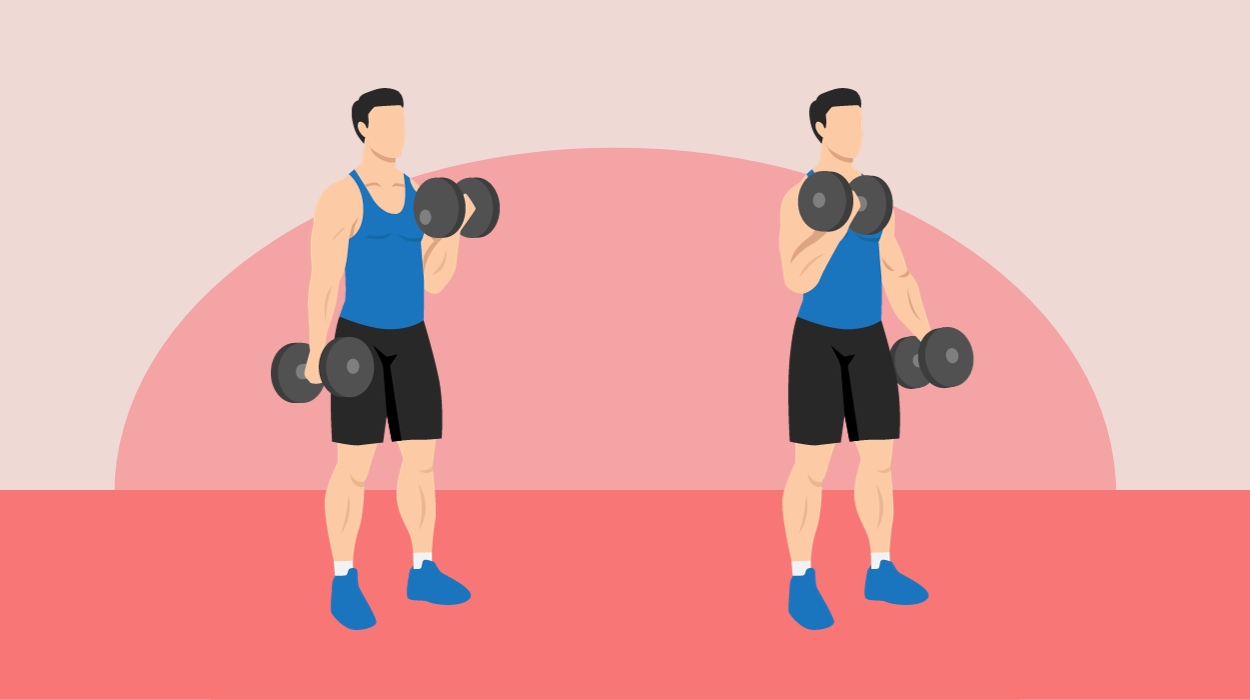
How to do:
- With a dumbbell in each hand, palms facing outward, and arms completely extended.
- Curl one arm while keeping the other stationary and switch.
Tips:
- Stable Stance and Elbow Position: Stand with your feet shoulder-width apart, keeping your elbows close to your torso throughout the movement to isolate the bicep muscles effectively.
- Controlled Movement: Curl one dumbbell at a time, turning your wrist so your palm faces your shoulder at the top of the movement, then lower it back slowly to maintain tension on the bicep.
- Avoid Swinging: Focus on moving only your forearm, avoiding swinging your arm or using momentum, to ensure maximum bicep engagement.
Optimal Sets & Reps: Three to four sets of 10 to 15 reps per arm
Curls With Neutral Grip
Curls with Neutral Grip, often performed with dumbbells, are a strength-training exercise focusing primarily on the biceps, along with the brachialis and brachioradialis muscles in the arms. Its effectiveness lies in its ability to strengthen and tone the arm muscles, making it a staple in arm and upper body workout routines.
How to do:
- Grasp dumbbells with your palms parallel to each other.
- Raise the weights.
- Maintaining your palms’ orientation throughout the motion.
- Lower them and repeat.
Tips:
- Proper Grip: Hold the dumbbells with your palms facing each other (neutral grip), which targets the brachialis and brachioradialis muscles along with the biceps.
- Stable Upper Body: Keep your upper arms stationary, elbows close to your torso, and avoid swinging the weights to maintain focus on the arm muscles.
- Controlled Motion: Curl the weights towards your shoulders in a smooth motion, then lower them back down with equal control to fully engage the muscles.
Optimal Sets & Reps: Three to four sets of eight to 12 reps
Isolated Bicep Curls
Isolated Bicep Curls are a focused strength-training exercise specifically designed to target the biceps, one of the primary muscle groups in the upper arms. By isolating the biceps, this exercise ensures concentrated muscle engagement, leading to more effective strengthening and development of the biceps.
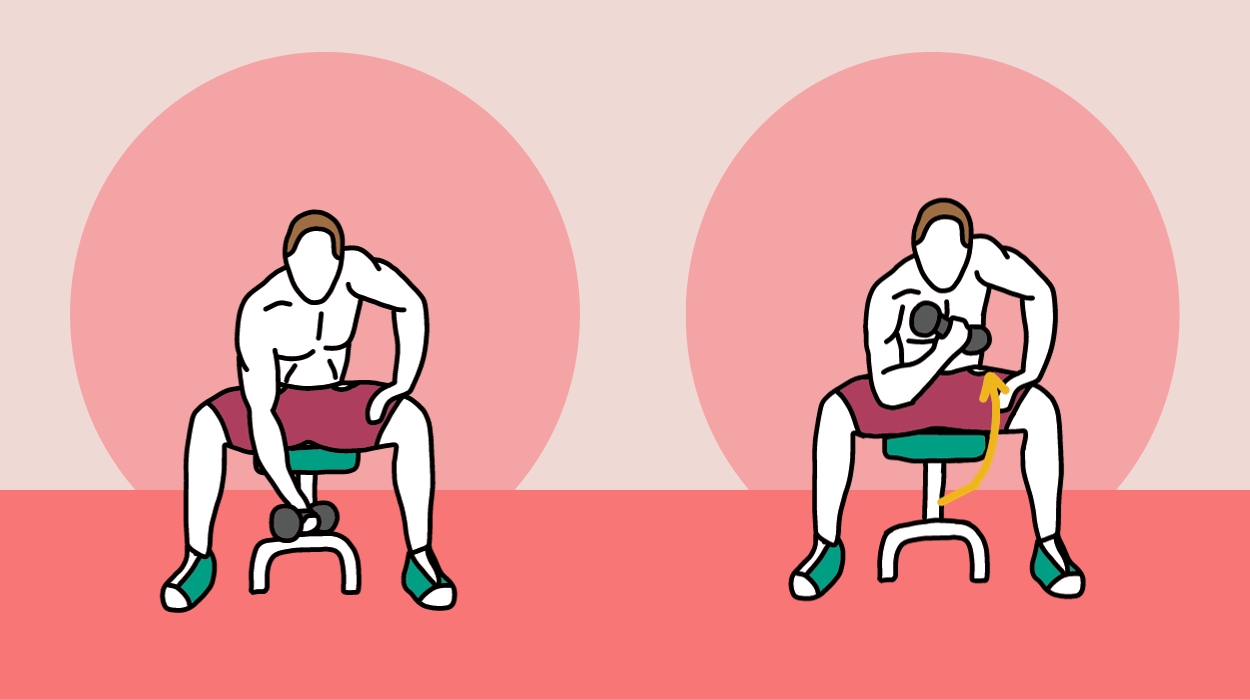
How to do:
- Sit on a bench, holding a dumbbell in one hand.
- Place the back of your upper arm against your inner thigh.
- Raise the weight towards your shoulder.
- Perform on the opposite side.
Tips:
- Stable Upper Body: Sit on a bench with your arm resting against your inner thigh or a preacher pad to stabilize your upper body, ensuring only your forearm moves during the curl.
- Full Range of Motion: Start with your arm fully extended, then curl the weight up to your shoulder, squeezing the bicep at the top, and lower back down slowly to maximize muscle engagement.
- Controlled Tempo: Maintain a controlled pace throughout the movement, avoiding any jerky or swift motions, to keep constant tension on the bicep.
Optimal Sets & Reps: Three to four sets of 10 to 12 reps per arm
Triceps Exercises
Narrow-Grip Chest Press
The Narrow-Grip Chest Press is an effective exercise targeting the chest, triceps, and front deltoids. The narrow grip focuses the effort more on the triceps and the inner chest, making it a valuable addition to upper body strength and conditioning routines.
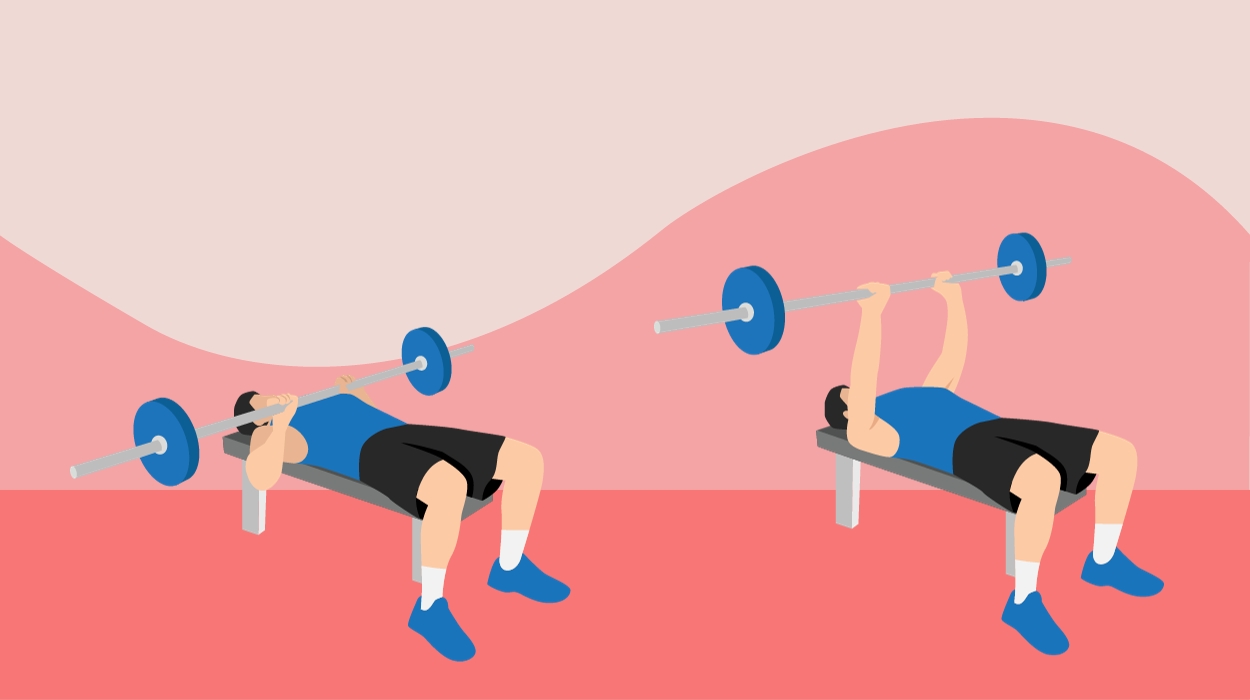
How to do:
- Lie on a bench with a barbell.
- Hold the bar with a close grip.
- Bring it down to your chest.
- Press it back up, emphasizing tricep engagement.
Tips:
- Grip and Elbow Alignment: Grip the barbell or dumbbells with your hands closer than shoulder-width apart, and keep your elbows tucked in close to your sides to emphasize tricep engagement.
- Stable and Controlled Movement: Lie flat on a bench, press the weight straight up above your chest, then lower it back down in a controlled manner, ensuring a full range of motion for effective muscle activation.
- Breathing Technique: Inhale while lowering the weight and exhale forcefully as you press it up, which helps maintain proper form and stability throughout the exercise.
Optimal Sets & Reps: Three to four sets of eight to 12 reps
Dips For Triceps
Dips for Triceps is a potent bodyweight exercise focused on strengthening and defining the triceps muscles, along with engaging the chest and shoulders. This exercise is highly valued for its versatility and ability to build upper body strength without needing weights.
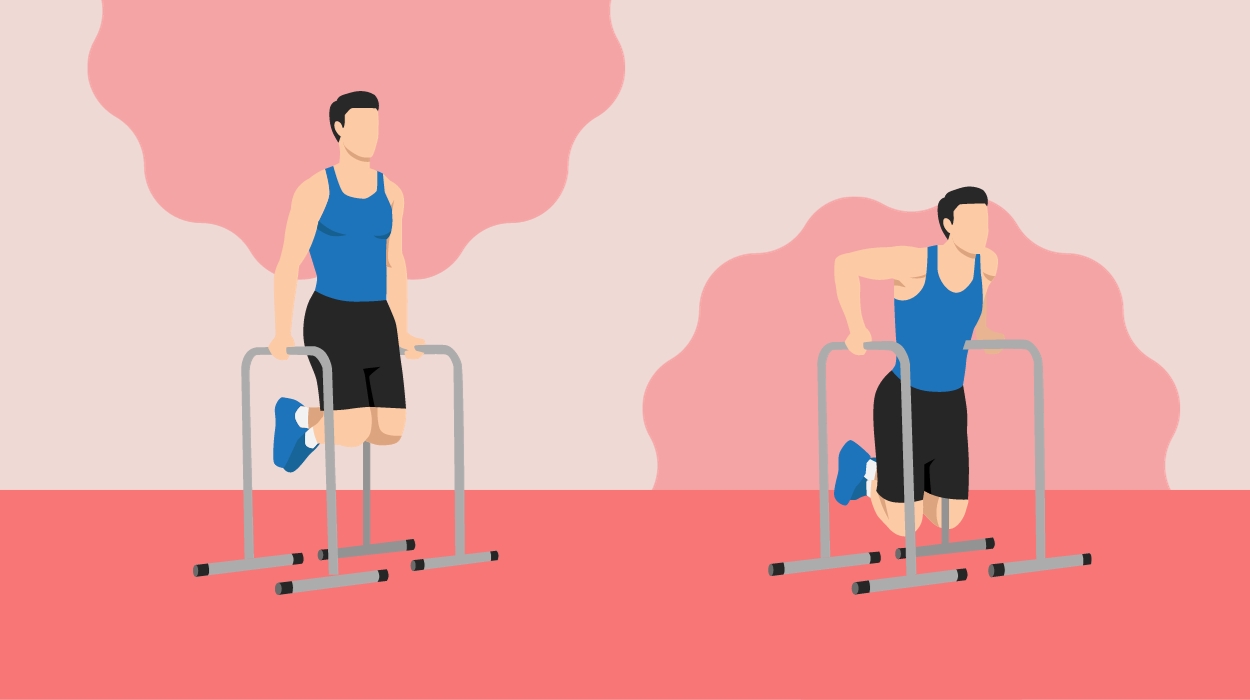
How to do:
- Utilize parallel bars or a sturdy bench.
- Hoist the body up with arms extended.
- Lower it by bending the elbows until they reach about a 90-degree angle.
- Push back up to the start position.
Tips:
- Elbow Position: Keep your elbows close to your body and point straight back to target the triceps effectively, rather than flaring them out to the sides.
- Controlled Depth and Movement: Lower your body until your elbows are at about a 90-degree angle, then push back up to the starting position with controlled, steady movement to maximize tricep engagement.
- Body Position: Keep your body upright and close to the bars; leaning forward too much can shift the focus away from the triceps to the chest.
Optimal Sets & Reps: Three to four sets of eight to 12 reps
Tricep Extension Overhead
Tricep Extension Overhead is a strength-training exercise targeting the triceps effectively, promoting muscle growth and increased arm strength. It can be performed with a dumbbell, barbell, cable machine, or resistance band.
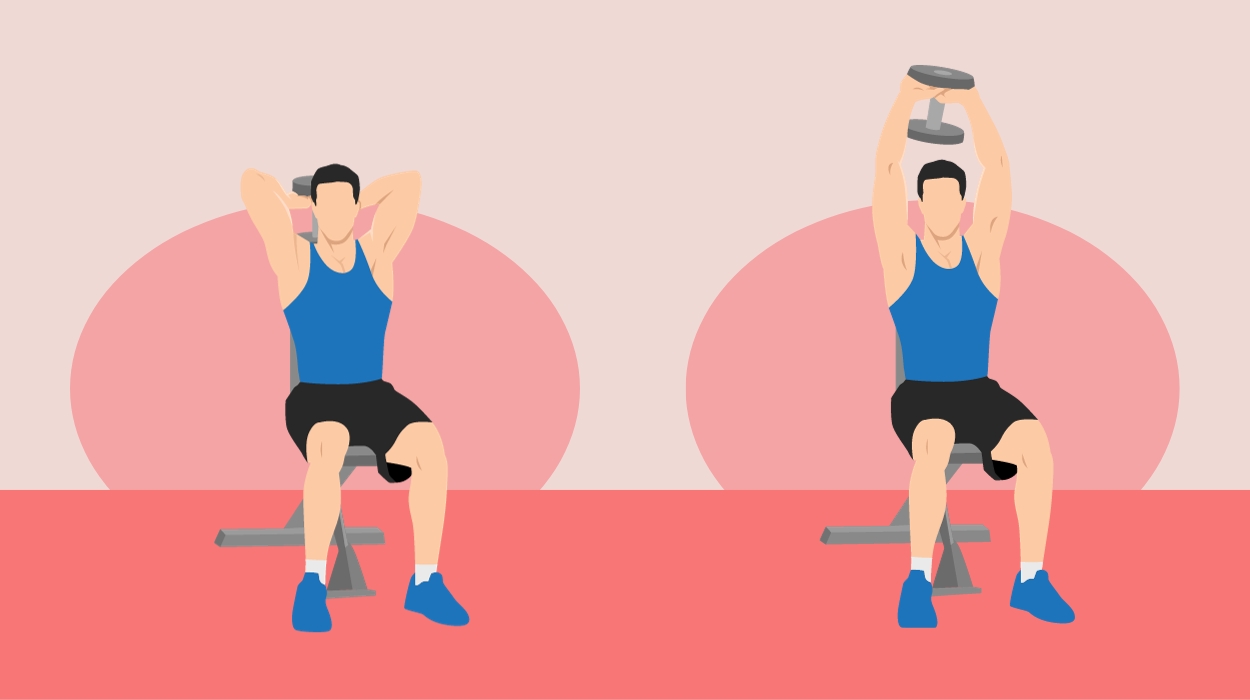
How to do:
- With both hands, grip a dumbbell above your head, keeping your elbows near your ears.
- Bring the weight behind your head, then extend your arms to the initial position.
Tips:
- Proper Elbow Alignment: Keep your elbows close to your head and pointing straight up; avoid letting them flare out to the sides to maintain focus on the triceps.
- Controlled Movement: Start with your arms fully extended overhead, then slowly lower the weight behind your head, maintaining a controlled motion, before extending back to the starting position.
- Stable Core and Posture: Engage your core and keep your back straight throughout the exercise to provide stability and prevent any strain on your lower back.
Optimal Sets & Reps: Three to four of 10 to 15 reps
Forearms Exercises
Curls For Wrists
Curls for Wrists, commonly known as Wrist Curls, are a targeted exercise designed to strengthen the forearm muscles, specifically focusing on the wrist flexors. It’s essential for enhancing grip strength and forearm muscularity, beneficial for overall arm strength and dexterity in various physical activities.
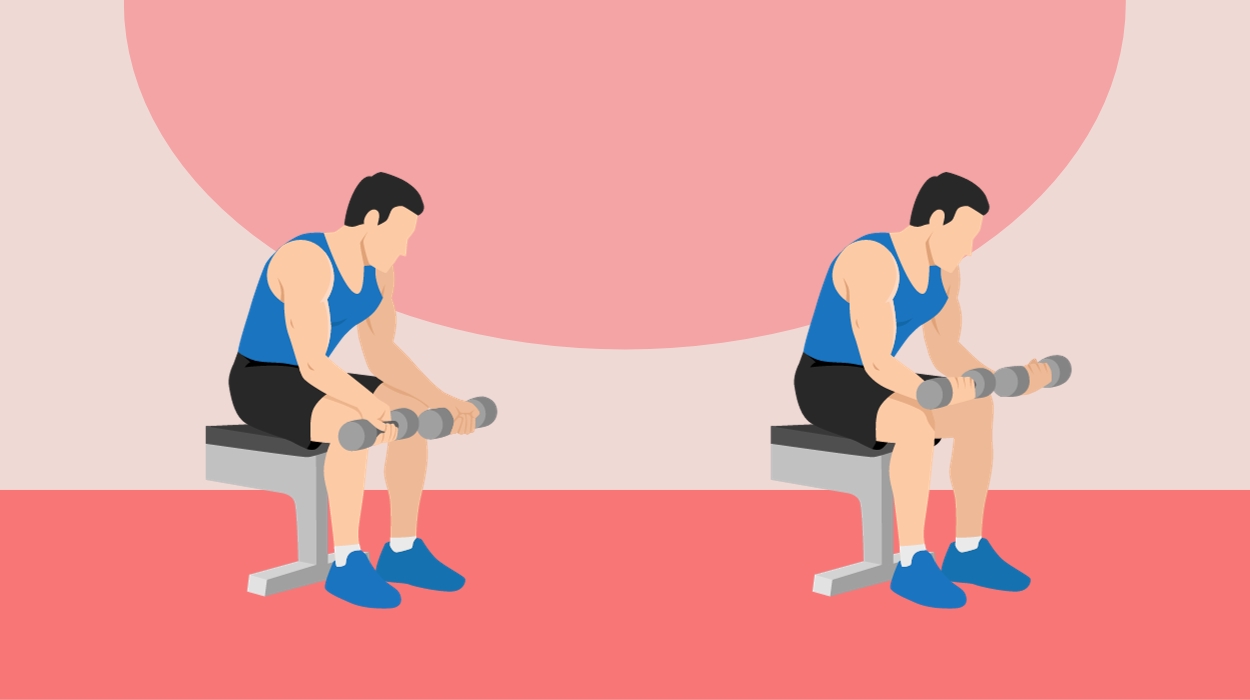
How to do:
- Sit on a bench, holding a barbell or dumbbell with an underhand grip.
- Place your forearms on your thighs, letting your wrists hang off the edge.
- Curl the weight up and down, concentrating on your wrists.
Tips:
- Correct Positioning: Sit on a bench with your forearms resting on your thighs or the bench itself, ensuring your wrists can move freely over the edge.
- Focused Movement: Hold the weight with your palms facing up, curl your wrists up as far as comfortable, then lower them back down in a controlled manner, keeping the rest of your arm still.
- Grip and Wrist Alignment: Maintain a firm but comfortable grip on the weight, and ensure your wrists remain straight throughout the motion to effectively target the forearm muscles.
Optimal Sets & Reps: Three to four sets of 12 to 15 reps
Wrist Curls In Reverse
Wrist Curls in Reverse, often referred to as Reverse Wrist Curls, are a focused exercise aimed at strengthening the extensor muscles of the forearm. It’s an effective exercise for balancing forearm development and improving grip and wrist strength.
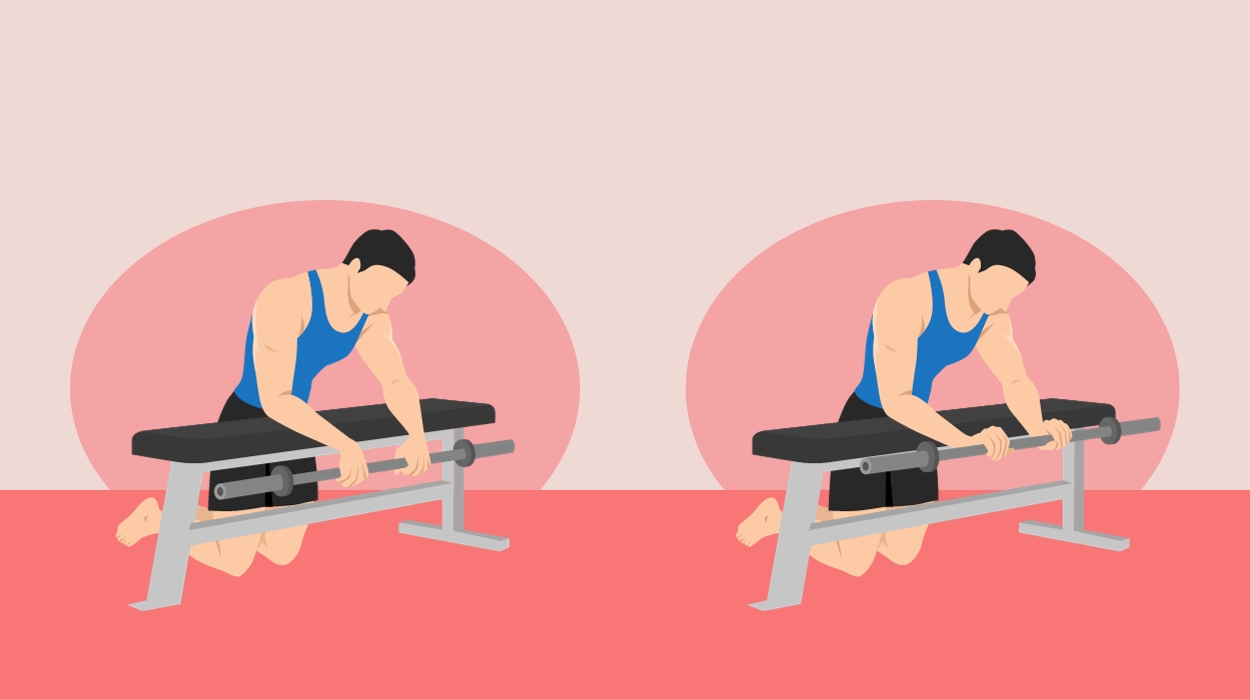
How to do:
- Similar to wrist curls, grasp the weight with an overhand grip.
- Curl the weight up and down, targeting the upper part of your forearms.
Tips:
- Proper Arm Support: Sit or stand with your forearms supported on a bench or your knees, allowing your hands and the weights to extend beyond the edge for a full range of motion.
- Controlled Motion: Grip the weight with palms facing down and curl your wrists upwards, focusing on the contraction of the forearm extensors, then lower back down smoothly to the starting position.
- Steady Grip and Wrist Alignment: Ensure a secure grip on the weight and keep your wrists straight throughout the exercise to effectively target the forearm extensors.
Optimal Sets & Reps: Three to four sets of 12 to 15 reps
Weighted Walk
The Weighted Walk, commonly known as the Farmer’s Walk, is a functional strength and endurance exercise that involves walking a set distance while holding weights in both hands. It is highly versatile and beneficial for athletes and fitness enthusiasts alike, improving functional strength and enhancing cardiovascular fitness.
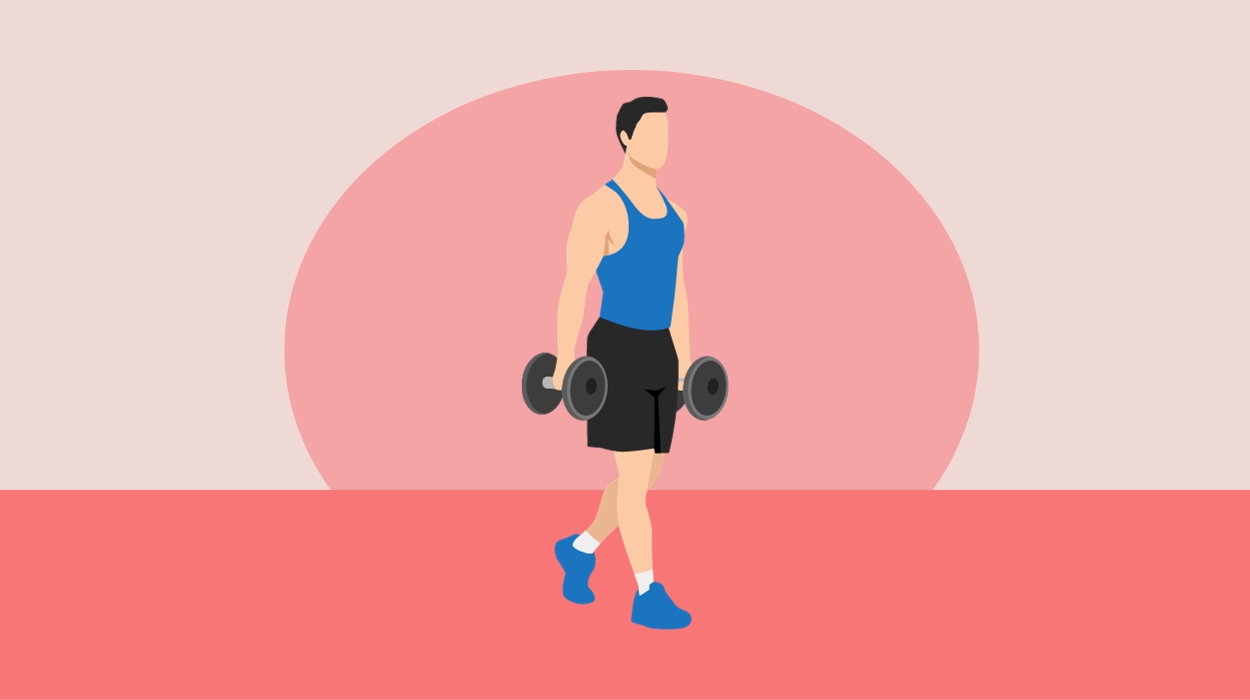
How to do:
- Hold heavy dumbbells or kettlebells at your sides.
- Walk for a predetermined distance or duration.
- Maintain a firm grip and an erect posture during the exercise.
Tips:
- Proper Posture: Keep your back straight, shoulders back, and core engaged throughout the walk to ensure stability and effective engagement of the target muscles.
- Even Weight Distribution: Choose weights that are equal in mass for each hand to maintain balance and prevent leaning, ensuring an effective and safe workout.
- Steady Pace and Grip: Maintain a firm grip on the weights and walk at a steady, controlled pace, focusing on endurance rather than speed.
Optimal Sets & Reps: Two to three sets of 30 to 50 meters
Dietary Guidelines For Bigger Arms
While striving for larger, more powerful arms, integrating proper nutrition is as crucial as engaging in physical activity. This will not help you grow your arms fast but will provide sustainable nutrition to ensure consistent growth.[1] In this segment, we’ll explore essential dietary recommendations that encourage muscle development and holistic wellness.
Boost Protein Intake
Sufficient protein intake is vital for muscle growth and recovery. Including a variety of premium protein sources, like lean poultry, fish, beans, and dairy products, can supply the necessary amino acids for cultivating larger arms and enhancing overall well-being.
Incorporate protein into your diet as part of a plan for how to get bigger arms at home and how to get bigger arms fast. Not at lightning speed but faster than someone who does not incorporate proteins in their diet.
Healthy Fats
Beneficial fats are how you too can grow bigger arms. They are also integral for hormone generation, nutrient assimilation, and maintaining healthy skin and hair. Integrate sources of unsaturated fats, such as avocados, nuts, seeds, and olive oil,[2] to ensure your body operates efficiently as you pursue bigger arms.
Proper Hydration
Appropriate hydration is essential for general health, energy levels, and muscular function. Endeavor to consume sufficient water throughout the day, particularly before, during, and after exercising, to support muscle expansion and avert dehydration.
Manage Your Carbohydrate Intake
Carbohydrates act as a primary fuel source for the body and can bolster your workouts. Choose complex carbohydrates, like whole grains, fruits, and vegetables, which offer lasting energy and help sustain stable blood sugar levels, fostering overall health and muscle development.
Create An Effective Exercise Plan For Muscle Growth
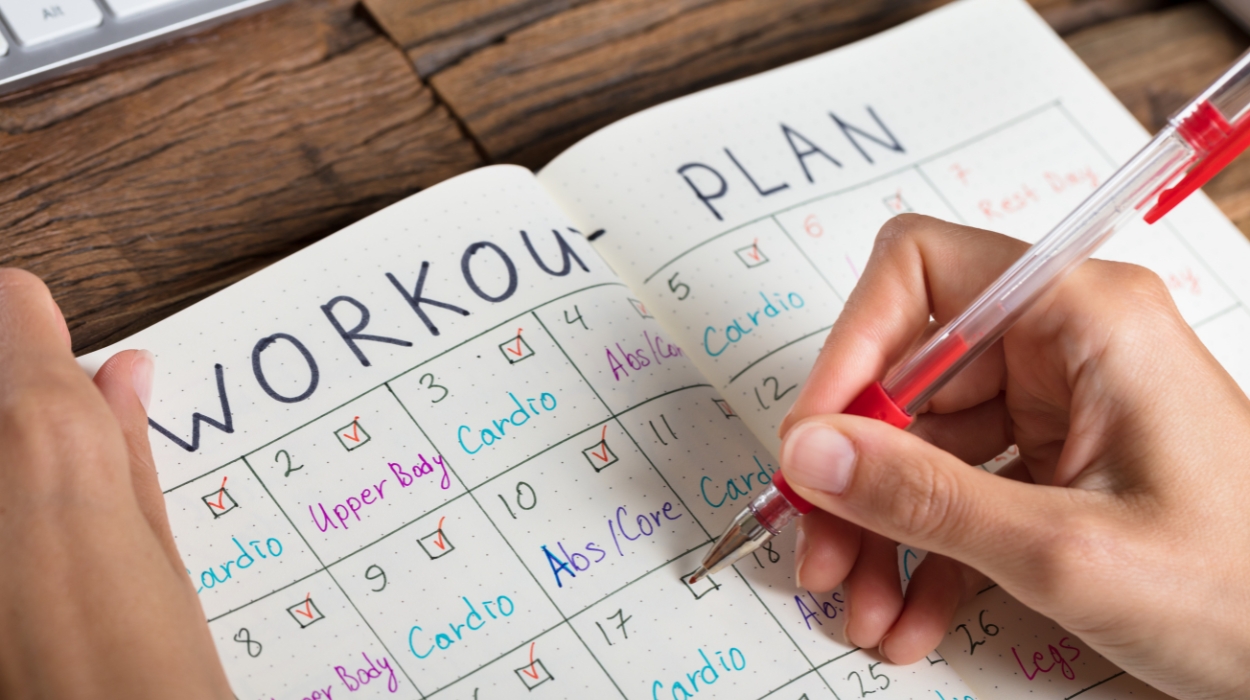
Crafting an efficient exercise plan is vital for muscle development and attaining bigger arms, as it guarantees you remain on course and preserve consistency in your workouts. A well-organized plan on how to get bigger arms should consider your fitness level, objectives, accessible time, and any possible limitations.
Here are several essential elements to contemplate when designing an exercise plan to grow bigger arms and for muscle growth:
Establish Achievable Targets
Set reachable, precise, and time-sensitive goals to direct your advancement. These aims should be demanding yet feasible and should correspond with your holistic wellness.
Select Appropriate Exercises
Include exercises such as strength training that target various muscle groups, such as biceps, triceps, and forearms. Diversify the exercises to maintain engaging workouts and encourage muscle growth through varied stimulation.
Decide On Workout Frequency And Length
Determine the number of days per week you can dedicate to exercising and allocate time for each session. Make sure you permit adequate rest intervals for muscle recuperation and development.
Track your progress
Assess your performance regularly and modify your exercise plan as required. This enables you to pinpoint areas needing enhancement and ensures you stay on track toward your objectives.
Emphasize Nutrition And Recovery
Supplement your workout routine with suitable nutrition and ample rest. This fosters muscle growth, recovery, and overall health, permitting you to optimize the efficiency of your plan.
Keep in mind that an efficient exercise plan for muscle growth should be personalized and adjustable, allowing you to make changes as you advance in your fitness journey. By concentrating on these essential elements and upholding a balanced strategy, you’ll be well on your path to accomplishing larger, more robust arms and improved overall wellness.
How Long Will It Take To Get Bigger Arms?
Gaining insight into the duration required when trying to get bigger arms can assist you in establishing pragmatic expectations and sustaining motivation during your fitness journey. However, it’s crucial to consider that personal factors, such as genetics, present fitness levels, and the regularity and intensity of your exercise routine, all influence the pace at which you’ll experience improvement.
Generally, with a committed and well-organized exercise plan, coupled with appropriate nutrition, you may start observing changes in your arms within 6 to 8 weeks. Nevertheless, it’s vital to concentrate on long-lasting, maintainable growth and holistic wellness rather than fast, transient outcomes.
Embrace the journey, cherish the advancements you achieve, and bear in mind that consistency, patience, and a harmonious strategy will ultimately guide you to your objective of larger, more powerful arms.
Conclusion
As we wrap up, developing bigger, stronger arms necessitates a blend of efficient workouts, appropriate nourishment, rest, and continual endeavor. By adhering to the recommendations elucidated in this article, you can devise a comprehensive exercise plan that addresses each muscle group, fosters muscle expansion, and supports your overall well-being.
Remember to establish practical goals, monitor your progress, and remain committed to your plan, even on challenging days. With persistence, resolution, and a harmonious strategy, you can achieve the bigger, stronger arms you desire while improving your overall health. Appreciate the journey, celebrate the progress, and persistently pursue your objectives.
Discover how to get bigger arms fast and how to get bigger arms at home by following our guidelines.
Frequently Asked Questions
While bicep exercises are essential for bigger arms, it’s also important to incorporate exercises that target the triceps and forearms for overall balanced development.
It’s recommended to exercise the arms 2-3 times per week with rest periods in between to allow for muscle recovery and growth.
It’s important to remember that building bigger arms requires consistency, dedication, and a balanced approach. While some progress may be seen in as little as 6-8 weeks, it’s important to focus on long-term, sustainable growth rather than quick, temporary results.
 Expert's opinion
Expert's opinion